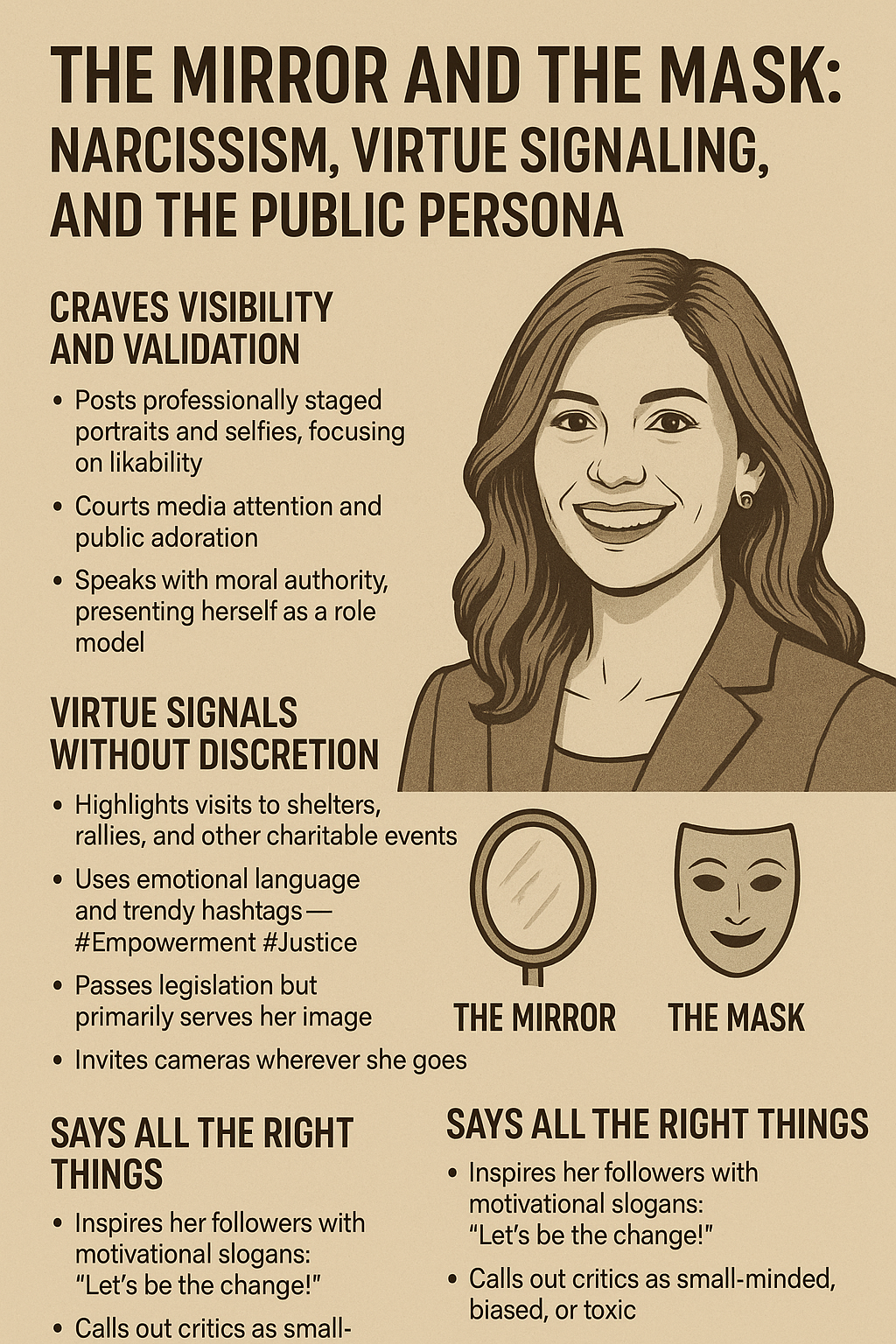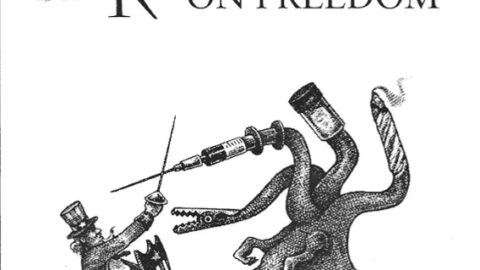In the age of image and influence, a beautiful woman who holds elected office stands at a potent crossroads of aesthetics, authority, and adulation. When combined with narcissistic traits and a proclivity for virtue signaling, this convergence creates a complex public figure—both admired and subtly manipulative.
This article explores the behaviors, messages, and strategies such a figure may employ, not to shame or stereotype, but to help voters, observers, and even leaders themselves discern the fine line between authentic service and performative politics.
The Perfect Image: Beauty as a Political Currency
Physical beauty, especially when coupled with public office, grants significant social capital. For a narcissistic personality, beauty is not just a blessing—it’s a brand. Every outfit, camera angle, and facial expression is curated to captivate, garner loyalty, and deflect criticism.
Common behaviors include:
- Strategic photo ops in charitable settings or service events, but with camera framing that emphasizes her attractiveness and position.
- Highlight reels over hard realities: Social media posts focus on glamorous moments—speaking at events, standing with high-profile leaders, traveling, or “working hard” while elegantly dressed.
- “Candid” vulnerability: Sharing highly polished “behind-the-scenes” moments that appear vulnerable but are carefully controlled (“Just me, praying for wisdom today in these challenging times #FaithAndService”).
Public Language: Cloaked in Humility, Driven by Spotlight
Her public statements, while seemingly sincere, often follow a formula: appearing gracious while subtly amplifying her own virtue.
Typical phrases might include:
- “I’m so humbled to be recognized for…” (followed by several photos of the award ceremony).
- “Service isn’t about being seen. It’s about making a difference… and I’m grateful for all the love and support you’ve shown!” (paired with flattering images).
- “It’s not easy being a woman in politics, but I’ve learned to lead with grace, strength, and beauty.” (This blends empowerment with self-admiration.)
Such language is performative. It praises others while always circling back to her own identity, sacrifice, or struggle.
Virtue Signaling in Social Media: Performance Over Policy
For this type of figure, social media is not just communication—it’s theater. Every post is an audition for admiration.
Common tactics:
- Highlighting her charity or service but often centering herself (“Grateful to lead this humanitarian trip with these amazing people!” with ten pictures of her).
- Using hot-button hashtags to appear aligned with current movements, even if her policies or lifestyle contradict them.
- Emotional branding: Posting teary-eyed selfies or solemn gazes with captions about current tragedies (“Praying for peace. My heart is heavy tonight.”).
- “God and gratitude” branding: Faith is used not as a guiding principle, but as a rhetorical accessory to appeal to religious audiences (“God is so good! Humbled and honored to represent YOU!”).
How Narcissism Distorts Leadership
Behind the polished speeches and gratitude posts is often a fragile ego that feeds off external praise.
Traits include:
- Inability to accept critique: Negative feedback is interpreted as jealousy or hate rather than constructive insight.
- Emotional manipulation: “After all I’ve done, I can’t believe people would say that about me” shifts attention from issues to her feelings.
- Co-opting causes: Movements are used more to elevate her status than to serve the people involved.
The Cost to the Public
While this brand of leadership can be magnetic, it’s often hollow beneath the surface. Image replaces integrity. Moments replace movement. Followers replace citizens.
Risks include:
- Policy shallowness: More focus on optics than results.
- Disillusioned constituents: People tire of the performance and begin to see the gap between words and action.
- Erosion of trust: When sincerity is consistently suspect, cynicism grows.
Spiritual and Ethical Insight
In Matthew 6:1, Jesus warns:
“Be careful not to practice your righteousness in front of others to be seen by them…”
This is not an indictment against being beautiful, visible, or a leader. It is a call to be genuine.
When public virtue becomes a performance, the soul hardens. But when beauty, power, and service align with humility and God-centered values, it produces a rare kind of strength—one that elevates others more than self.
How to Spot the Difference: Narcissistic Signaling vs. Authentic Leadership
| Virtue Signaling Leader | Authentic Servant Leader |
|---|---|
| Always on display | Often behind the scenes |
| Needs to be seen doing good | Desires good to be done, even if unnoticed |
| Talks more about self-sacrifice | Actually sacrifices, without spotlight |
| Uses faith or causes as branding tools | Lets faith guide choices, even when unpopular |
| Measures success by applause | Measures success by impact and faithfulness |
Conclusion: The True Mirror
In a world obsessed with perception, the temptation to perform is powerful—especially for the beautiful and influential. But a public figure’s true reflection is not in a filtered selfie or a viral post. It’s in what they do when no one is watching, what they say when no one is listening, and who they serve when there is no political gain.
True greatness is quiet, costly, and often unnoticed. It does not demand praise. It seeks only to be faithful.






